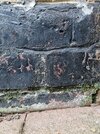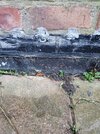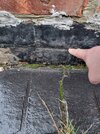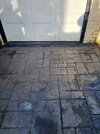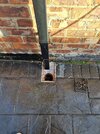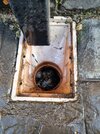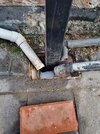I would suggest that you get some advice from a suitable building surveyor or a member of the PCA
www.property-care.org
An independent person, not one who seeks to sell products that they may recommend.
Your issue is condensation. You need advice how to deal with that and how to use your PP fan, heating and alter your lifestyle to reduce and deal with the humidity produced that the building can't cope with. A properly fitted PP fan should deal with condensation and mould, so it's surprising that you have mould, so something is wrong.
You don't want to be using a PP fan, extract fans and a dehumidifier. That's a nonsense situation.
You do not need to go looking for your DPC. It's clear that there has already been an injected DPC. You have no signs of rising or structural dampness, so don't waste your time on a goose chase.
Your pointing is a mess. It needs all doing, not patching. And doing correctly.
You have frost damaged bricks. They need dealing with as they aid water absorption and water retention.
You need a single strategy/solution which normally involves rectifying the several causes of condensation, as it may be one or two main causes and some contributors.


